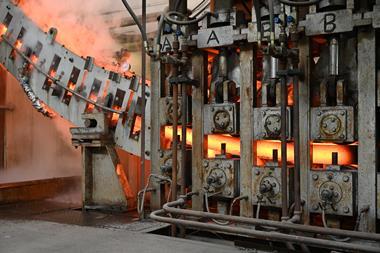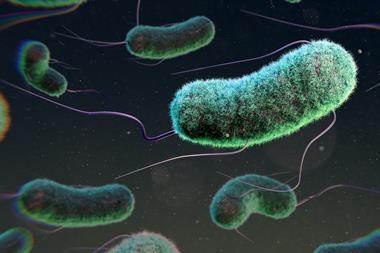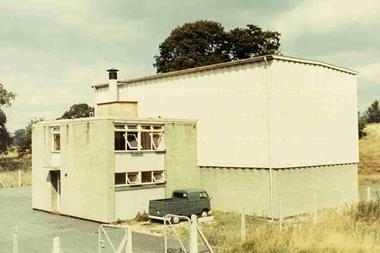Finding my way into fusion research

Stars are arguably one of the most indulgent things to look at but are also nature’s example of a working fusion reaction. As amazing as that statement is, it amazes me even more that ordinary researchers made this observation, passing down integral bits of information over time. Remarkably, their important observations could now translate into solving the very real climate emergency we have found ourselves in today.
The popular perception of scientists being lone geniuses was once a perception of my own. Hence, until after my A-level studies, it never occurred to me that a career path in science could be so well suited to me. Ever since I have found myself to become one, I would now define a researcher as someone who harnesses their curiosity to try and unpick the mechanics of nature.
In fact, my journey to becoming a researcher stemmed from my curious nature more than an explicit passion for science. As a bright-eyed 18-year-old student enjoying the fresh university environment, I knew I had made the right choice to study chemistry at university. Throughout my degree, I always loved physical chemistry much more than ‘classical’ chemistry, so many typical graduate roles such as analytical testing, medicinal chemistry and even computational chemistry were fields that I could not see myself gratifyingly working on. But, I remember sitting through my first lecture in quantum mechanics being fascinated by the fact that many of my questions did not yet have answers. Since then, I began to consider the prospect of further study after university – a direction that became much more fixed when I took a gap year after graduation.
I travelled to a total of 15 countries that year including countries in Asia and the Middle East. As wonderful as it was to visit some of the most beautiful places in the world, it was eye-opening to witness how unevenly privilege is distributed throughout society. Healthcare, clean water, food and education have never been out of reach for me, but I saw that people, exactly like me, do not have these basic necessities simply because of where they were born.
I decided I would like to dedicate my career to using all the privileges I have had handed to me, particularly education, to try and push the boundaries of humanity’s knowledge forward. Though I am just an ordinary researcher, it is ordinary research that enables society to change.
I am hugely inspired by the United Nation’s 17 sustainable development goals, since they focus on delivering basic necessities to everybody in the world, and I was very keen to dedicate my first research project to the climate emergency. But when looking for PhD opportunities I mostly saw research in green chemistry, catalysis or energy storage and batteries. Though these are all very important areas of research, I just did not believe that I personally found them interesting enough to dedicate four years of my life to researching them.
I then saw a position advertised for the Fusion Energy Centre of Doctoral Training (CDT) programme. At first, I wondered if I would struggle to transition from chemistry to physics but learnt that the CDT is designed to equip its candidates with the correct skills before they embark upon their own research in the subject of the programme. Hence, despite my background in chemistry (and fusion not forming any part of my education), the CDT made fusion energy research very accessible for me.
Fusion energy is no longer simply just a physics experiment; it is now a very real race against time to try and build a functional fusion reactor. Although fusion energy is a near flawless theoretical concept, in reality there are many practical challenges that are yet to be overcome. To stop fusion energy forever being ‘another ten years’ off, physicists, engineers and material scientists are now combining their knowledge to try and achieve this very challenging goal. The demand in other areas such as legislation, policy and regulation for fusion is also rising. Zooming out of the many specifics, at the heart of it, the progress made all comes from ordinary researchers who, after all, are just everyday people – working on a technology inspired by the reaction process that powers the stars.
For this reason, I am proudly part of the Fusion CDT and have spent the last nine months travelling from the Universities of Durham, Liverpool, Manchester, Oxford and York learning straight from the current experts in the field (and meeting many of the future experts).
The niche environment of a fusion reactor demands that a material that can withstand excessive temperatures, radioactivity, embrittlement and arguably the most challenging engineered environment to date. Having been well equip from the CDT, I will now spend the rest of my PhD grappling with high entropy alloys for nuclear fusion applications – an example of an extraordinary new field of materials that are another example of what ordinary researchers have brought to life.
Additional information
This article was produced in collaboration with the Creative Tuition Collective.
Creative Tuition Collective (CTC): Innovative and inclusive education is a non-profit organisation aiming to equalise the educational playing field. CTC strives to provide young people from low income backgrounds a free tuition service with holistic, high-quality tutoring, extracurricular opportunities and mental health support groups. With a passion and enthusiasm to teach and innovate education, CTC aims to not only develop the knowledge and self-assurance of young people in STEM but to also better prepare them for beyond the classroom. By assembling a diverse team within CTC along with specialist tutors, collaborating partners and invited speakers, CTC will tackle the lack of belonging, self-confidence and other barriers facing young people through an intersectional and progressive lens.












No comments yet